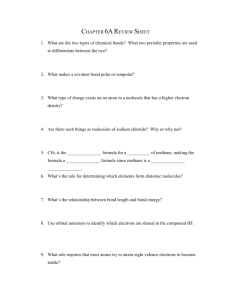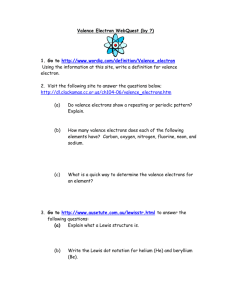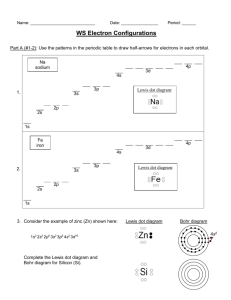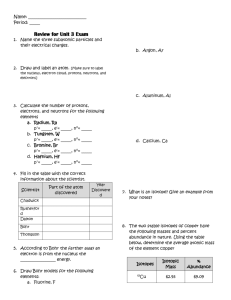NOMENCLATURE UNIT – Multivalent Elements
advertisement
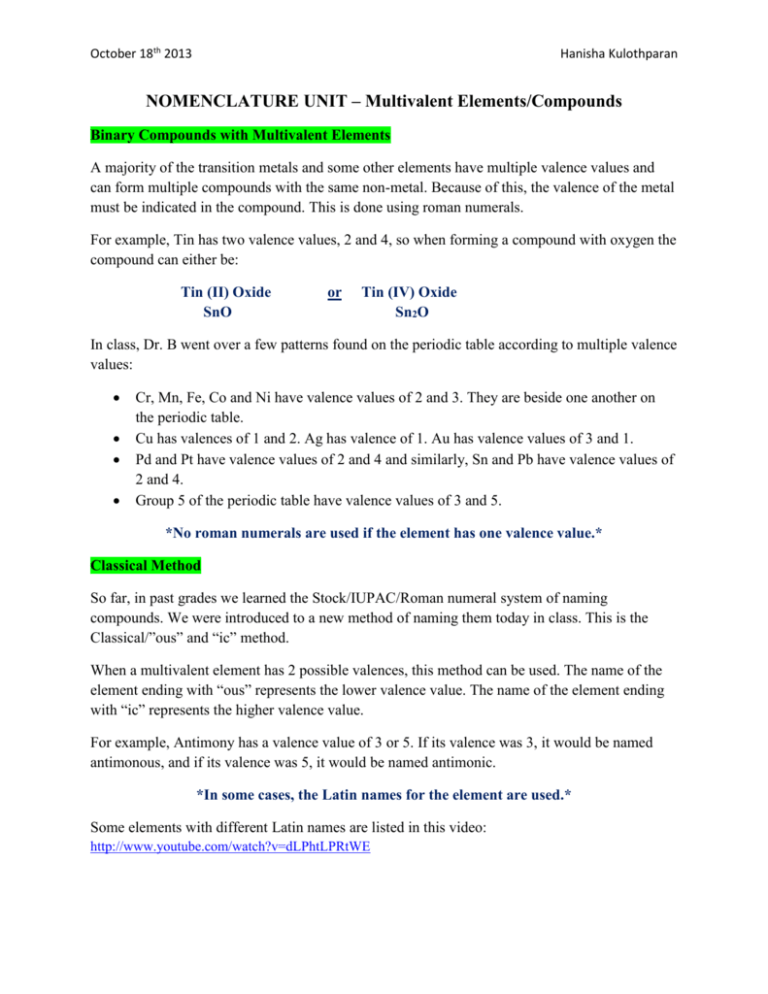
October 18th 2013 Hanisha Kulothparan NOMENCLATURE UNIT – Multivalent Elements/Compounds Binary Compounds with Multivalent Elements A majority of the transition metals and some other elements have multiple valence values and can form multiple compounds with the same non-metal. Because of this, the valence of the metal must be indicated in the compound. This is done using roman numerals. For example, Tin has two valence values, 2 and 4, so when forming a compound with oxygen the compound can either be: Tin (II) Oxide SnO or Tin (IV) Oxide Sn2O In class, Dr. B went over a few patterns found on the periodic table according to multiple valence values: Cr, Mn, Fe, Co and Ni have valence values of 2 and 3. They are beside one another on the periodic table. Cu has valences of 1 and 2. Ag has valence of 1. Au has valence values of 3 and 1. Pd and Pt have valence values of 2 and 4 and similarly, Sn and Pb have valence values of 2 and 4. Group 5 of the periodic table have valence values of 3 and 5. *No roman numerals are used if the element has one valence value.* Classical Method So far, in past grades we learned the Stock/IUPAC/Roman numeral system of naming compounds. We were introduced to a new method of naming them today in class. This is the Classical/”ous” and “ic” method. When a multivalent element has 2 possible valences, this method can be used. The name of the element ending with “ous” represents the lower valence value. The name of the element ending with “ic” represents the higher valence value. For example, Antimony has a valence value of 3 or 5. If its valence was 3, it would be named antimonous, and if its valence was 5, it would be named antimonic. *In some cases, the Latin names for the element are used.* Some elements with different Latin names are listed in this video: http://www.youtube.com/watch?v=dLPhtLPRtWE October 18th 2013 Hanisha Kulothparan If you’re still confused about multivalent compounds and the stock and classical methods of naming, check out this video: http://www.youtube.com/watch?v=CyFGooWJvGg Homework Study for the unit test Complete worksheets for “Chemical Nomenclature Unit”
